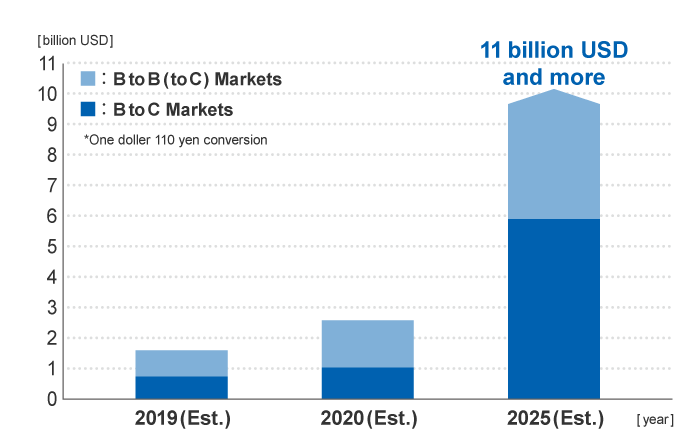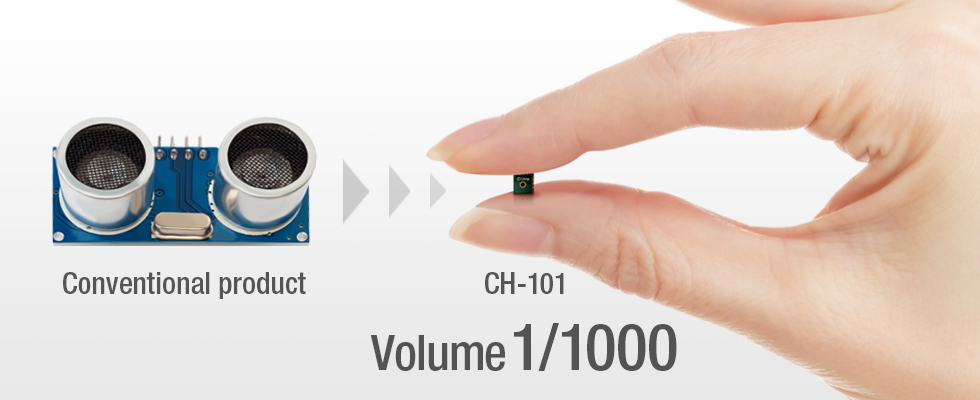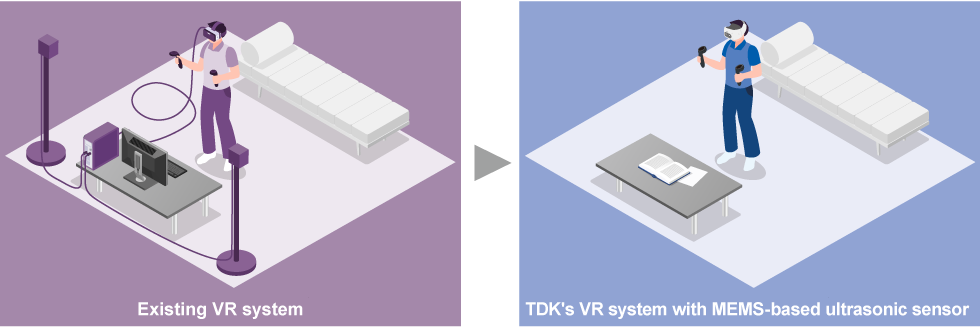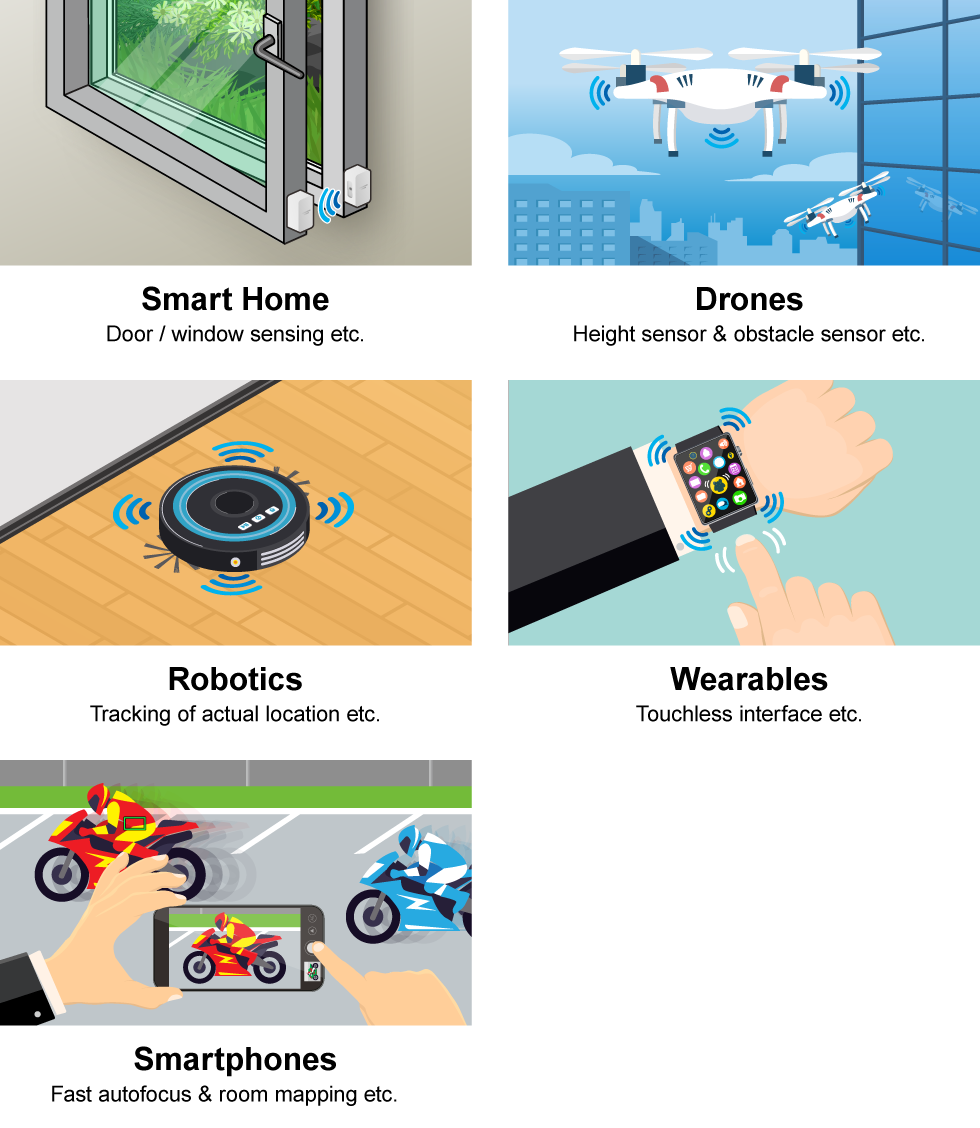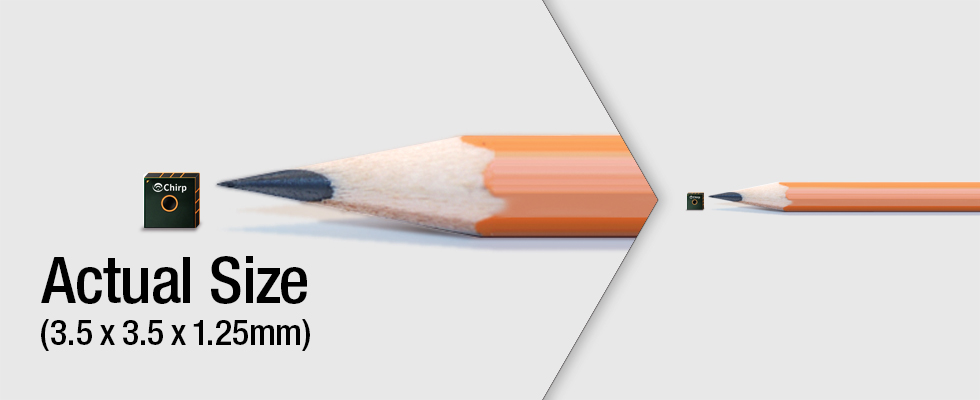MEMS ultrasonic sensor: Pushing the boundaries of AR/VR technology
Challenge in making AR/VR more realistic: decreasing the size of ultrasonic sensors
Since various head-mounted display (HMD) AR/VR headsets have started becoming available at affordable prices in 2016, the global AR/VR market has grown significantly with its size likely surpassing 11 billion USD by 2025 (Source: “2017 Future Perspective of AR/VR Related Market” by Fuji Chimera Research Institute.). While the AR/VR systems in the past were primarily intended for entertainment applications such as gaming, their use is expected to increase in fields such as assembly, manufacturing, transportation, retail, education, and healthcare.
The latest models of AR/VR systems allow users to simulate complex surgeries in a virtual space. The HMD and the hand controller, which have six degrees of freedom (6-DoF1), make this possible. This enables the seamless synthesis of body movements in a virtual space with those in real space. This is possible because of a sensor-based technology called location-tracking2), and by the ability to measure the distance to an object by using the ToF method.
ToF measures the distance to an object based on the time difference between the emission of light, infrared ray, or ultrasound and its return to the sensor after being reflected by the object. Optical or infrared ToF, while being highly precise, cannot be used for measurements when there is an obstacle, and they are not ideal for measuring the distances to a glass or other transparent objects. Ultrasonic ToF can accurately measure the distance to an object, even if it is highly reflective, and it is also not affected by the lighting conditions, size, or color of the object. Traditional ultrasonic ToF sensors require complex signal processing and are too large to be embedded in household appliances.
ToF solutions with ultra-small MEMS-based sensors
TDK's solution to this challenge was CH-101, a new ultra-small ultrasonic ToF sensor with one-thousandth the volume of a traditional ultrasonic ToF sensor. The world's first MEMS-based ultrasonic sensor, offered under the Chirp brand, is a truly groundbreaking product that combines a piezoelectric micromachined ultrasonic transducer (PMUT3), power-efficient DSP (digital signal processor4), and low-power CMOS ASIC5 in a small-sized package with size of 3.5 x 3.5 x 1.25 mm.
Bats can fly freely in the dark without colliding into objects because they can detect the locations and relative speeds of objects by sending out pulsed ultrasound and receiving the echoes produced by the objects. This is called echolocation, and the same principle is used in location tracking with ultrasonic sensors.
The CH-101 has an embedded PMUT that emits ultrasonic pulses and receives echoes from objects that are in the sensor's field of view. When it is combined with a variety of signal processing, it can be used in a broad range of applications, including the detection of the distance to an object and its location, and sensing the presence of an object and avoiding collision. Further, it requires low power consumption, which is one hundred times lower than that of a traditional ultrasonic sensor, thus providing superior environmental performance.
While the CH-101 ultrasonic sensor supports a maximum sensing range of 100 cm, the mass production of a new product with a range of up to 500 cm, called CH-201, is scheduled to start by the end of 2019. As sensors become smaller than ever because of the use of the MEMS technology, we can expect a wide range of applications, including AR/VR headsets, smart homes, drones, robotics, smartphones, and wearables.
Terminology
- 6-DoF: DoF denotes degrees of freedom. Three degrees of freedom, or 3-DoF, correspond to rotational movement around the x, y, and z axes. These three rotational movements combined with translational movements along those axes make 6-DoF.
- Location tracking: In the context of AR/VR systems, location tracking refers to the technology used to detect the location and orientation of the HMD system and hand controllers by using a sensor, allowing the movements made in the real world to be aligned with those made in a virtual world.
- PMUT (piezoelectric micromachined ultrasonic transducer): A MEMS-based element that emits piezoelectric ultrasonic sound.
- DSP (digital signal processor): A specialized microprocessor designed to process digital signals (i.e. a chip with CPU's functions).
- CMOS ASIC: An ASIC (application-specific IC) based on CMOS, which is a type of LSI (large-scale integration) structures.
Related links
Product inquiries by email

